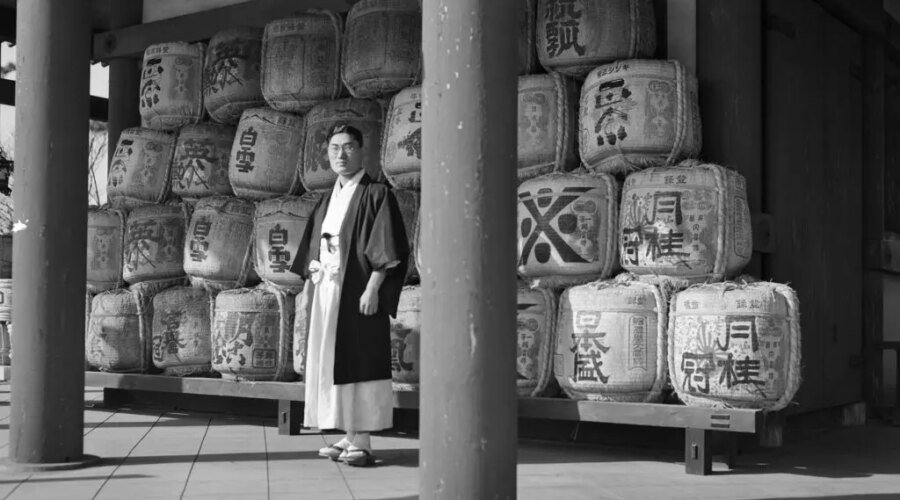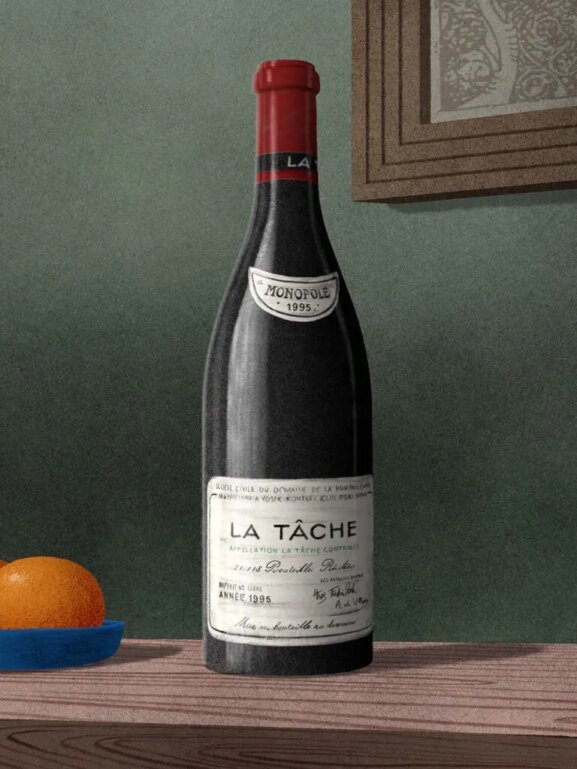Japan’s Rigid Brewing Law Is Fueling the U.S. Sake Boom
In an unexpected twist, American breweries are now shipping sake to Japan—the very country where the drink was born over a millennium ago, and where tradition has long defined how it is brewed and consumed.
The U.S. is now home to around 30 sake breweries, which is more than any country besides Japan. Some of these producers are former craft beer brewers who shifted their focus to rice-based fermentation. Others are Japanese nationals who moved abroad specifically to launch breweries—because in Japan, starting a new sake brewery is virtually impossible.
A System Built to Protect, Now Holding Sake Back
Homebrewing thrives in the U.S., where an estimated one million Americans—amateurs and entrepreneurs alike—experiment with it each year.
In Japan, it’s a different story: homebrewing has been outlawed since 1899, and the government hasn’t issued a single new sake license in more than 70 years. The law, once designed to protect tax coffers and heritage breweries, remains in place—even though alcohol tax now contributes less than 2% of national revenue, a dramatic fall from its role as a major pillar of the pre-war economy.
As sake brewery numbers shrink in Japan, even some government officials admit innovation can’t happen without opening the door to new entrants. For ambitious brewers, the options are stark: produce beverages that deliberately fall outside the legal definition of nihonshu—the official Japanese term for sake that meets government standards—or take their ambitions abroad.
Brewers Seeking Freedom Abroad

In 2014, Atsuo Sakurai—formerly head brewer at a sake company in Japan—moved to Holbrook, Arizona, his wife’s hometown, to open a brewery of his own, Arizona Sake.
Sakurai puts it bluntly: “Japan’s situation is like using herbicide,” he says. “In an effort to prevent new growth, you keep spraying at your feet until the soil itself deteriorates—making it harder not only for newcomers to sprout, but also for existing businesses to survive.”
American craft sake is evolving in ways that sometimes honor Japanese tradition—and sometimes boldly localize it. In 2014, Jake Myrick and Noriko Kamei founded Sequoia Sake Company in San Francisco. There, they began analyzing the DNA of Calrose—a popular American table rice with Japanese ancestry—to develop their own proprietary sake rice.
“In the U.S., we are able to innovate, try new things, and just play more,” says Myrick. “Another important aspect of being in the U.S. is our customers. They are open to these new products and have very few preconceptions.”
Japan’s Big Names Join the U.S. Movement

It’s not just independent sake brewers making moves to the States. In 2023, Dassai—the most internationally recognized premium sake brand—opened a sprawling $80 million, 55,000-square-foot brewery in Hyde Park, New York. The location was strategically chosen near the Culinary Institute of America, where Dassai now offers a sake education program for culinary students.

More recently, Heiwa Shuzo—the Japanese brewery behind the increasingly popular “KID” label in the U.S.—secured a brewing license in Los Angeles for a new facility slated to open next spring.
// Create the element
var script_68e93cb6b7faf = document.createElement(“script”);
script_68e93cb6b7faf.innerHTML = `
window.googletag = window.googletag || {cmd: []};
googletag.cmd.push(function() {
var adType = “leaderboard”;
var mapping;
var lbmapping = googletag.sizeMapping()
.addSize([1024, 0], [[970, 250], [970, 90], [1, 1], [728, 90]])
.addSize([728, 0], [[728, 90], [1, 1]])
.addSize([320, 0], [[1, 1], [300, 50], [300, 100], [320, 50], [320, 100]])
.addSize([0, 0], [[1, 1], [320, 50]])
.build();; // Size mapping for leaderboard ads
var medrecmapping = googletag.sizeMapping()
.addSize([1024, 0], [[300, 600],[300, 250]])
.addSize([728, 0], [300, 250])
.addSize([320, 0], [[1, 1],[300, 250]])
.addSize([0, 0], [[1, 1], [300, 250]])
.build(); // Size mapping for med rectengle ads
if(‘/39808611/article_page/article_leaderboard_1’ == ‘/39808611/article_page/article_leaderboard_1’
|| ‘/39808611/article_page/article_leaderboard_1’ == ‘/39808611/article_page/article_leaderboard_2’
|| ‘/39808611/article_page/article_leaderboard_1’ == ‘/39808611/article_page/article_leaderboard_3’) {
mapping = googletag.sizeMapping()
.addSize([1920, 0], [[728, 90]]) // >= 1920px
.addSize([1440, 0], [[728, 90]]) // 1440px-1919px
.addSize([730, 0], [[300, 250]]) // 730px-1439px
.addSize([0, 0], [[320, 100], [320, 50], [300, 100], [300, 50], [300, 250]]) // Up to 729px
.build();
} else {
mapping = adType == ‘leaderboard’ ? lbmapping : medrecmapping;
}
googletag.defineSlot(‘/39808611/article_page/article_leaderboard_1’, [],
‘div-gpt-ad-68e93cb6b7faf’).addService(googletag.pubads()).defineSizeMapping(mapping);
googletag.pubads().enableSingleRequest();
googletag.pubads().collapseEmptyDivs();
googletag.display(‘div-gpt-ad-68e93cb6b7faf’);
});
`;
// Append the script to the body
document.body.appendChild(script_68e93cb6b7faf);
“I visited the U.S. 21 years ago, and seeing the boom in craft breweries at the time made me wonder—will there someday be a future for craft sake [in Japan] too?” said Norimasa Yamamoto, president of Heiwa Shuzo. “Maybe local consumers will seek out local sake.”
I visited the U.S. 21 years ago, and seeing the boom in craft breweries at the time made me wonder—will there someday be a future for craft sake [in Japan] too?
Norimasa Yamamoto, president of Heiwa Shuzo
Yamamoto says that exports to America make up 30% of production.“I truly feel the global potential of Japanese sake,” he adds.
Buying the facility in Los Angeles felt like the obvious next step: “With so many new local sake breweries emerging in the U.S., I knew this was the moment to make that dream a reality.”
Boundaries Begin to Blur

American sake breweries have grown to the point where they’re now exporting back to Japan. In March of this year, Brooklyn Kura—based in Industry City, Brooklyn, New York—became the first American craft sake brewery to ship its product to Japan.
Founded in 2018, Brooklyn Kura has maintained a strategic partnership with renowned Japanese brewery Hakkaisan since 2021. The collaboration is designed to exchange technical expertise and market insights between Japan and the U.S., and the recent export was a milestone achievement born from this cross-cultural effort.
“The response has been incredibly positive,” says co-founder Brian Polen. “Retailers and restaurants, especially in Tokyo and the surrounding metro area, are enthusiastic about carrying our sake.”
For Polen and his team, the export to Japan is more than a business move—it’s a message.
“Our presence in Japan is meant to show that people outside Japan are deeply excited about sake,” he explains. “I think it excites Japanese people to see sake being embraced around the world. Hopefully it inspires pride and renewed enthusiasm for their own tradition.”
Redefining Sake Across Borders
These recent developments raise a provocative question: What does it really mean for a beverage to be called “sake”?
As opportunities for sake brewing dwindle in Japan, ambitious makers are crossing borders to realize their visions elsewhere. And in a surprising twist, American-made sake is now prompting Japanese consumers to rediscover the value of their own traditional drink.
// Create the element
var script_68e93cb6b8629 = document.createElement(“script”);
script_68e93cb6b8629.innerHTML = `
window.googletag = window.googletag || {cmd: []};
googletag.cmd.push(function() {
var adType = “leaderboard”;
var mapping;
var lbmapping = googletag.sizeMapping()
.addSize([1024, 0], [[970, 250], [970, 90], [1, 1], [728, 90]])
.addSize([728, 0], [[728, 90], [1, 1]])
.addSize([320, 0], [[1, 1], [300, 50], [300, 100], [320, 50], [320, 100]])
.addSize([0, 0], [[1, 1], [320, 50]])
.build();; // Size mapping for leaderboard ads
var medrecmapping = googletag.sizeMapping()
.addSize([1024, 0], [[300, 600],[300, 250]])
.addSize([728, 0], [300, 250])
.addSize([320, 0], [[1, 1],[300, 250]])
.addSize([0, 0], [[1, 1], [300, 250]])
.build(); // Size mapping for med rectengle ads
if(‘/39808611/article_page/article_leaderboard_2’ == ‘/39808611/article_page/article_leaderboard_1’
|| ‘/39808611/article_page/article_leaderboard_2’ == ‘/39808611/article_page/article_leaderboard_2’
|| ‘/39808611/article_page/article_leaderboard_2’ == ‘/39808611/article_page/article_leaderboard_3’) {
mapping = googletag.sizeMapping()
.addSize([1920, 0], [[728, 90]]) // >= 1920px
.addSize([1440, 0], [[728, 90]]) // 1440px-1919px
.addSize([730, 0], [[300, 250]]) // 730px-1439px
.addSize([0, 0], [[320, 100], [320, 50], [300, 100], [300, 50], [300, 250]]) // Up to 729px
.build();
} else {
mapping = adType == ‘leaderboard’ ? lbmapping : medrecmapping;
}
googletag.defineSlot(‘/39808611/article_page/article_leaderboard_2’, [],
‘div-gpt-ad-68e93cb6b8629’).addService(googletag.pubads()).defineSizeMapping(mapping);
googletag.pubads().enableSingleRequest();
googletag.pubads().collapseEmptyDivs();
googletag.display(‘div-gpt-ad-68e93cb6b8629’);
});
`;
// Append the script to the body
document.body.appendChild(script_68e93cb6b8629);
“Too few players are taking on this challenge,” says Yamamoto. “We need more diversity in sake. That’s what makes it so interesting. And I believe the U.S. is a place where that kind of cultural richness can thrive.”
Sake is diversifying, evolving, and being refined—shaped by American culture and sensibilities. When that evolution reaches its next peak, one may be left wondering: Where, exactly, is its true homeland?
More Sake Coverage
- How to drink sake, according to pros.
- Learn how to pair sake with food, from steak to pizza.
- Get to know Mexico’s first sake brand.
- These sake breweries around the world offer a masterclass in sustainability.
- Proof that sake is delicious in cocktails: the Yuzu Spritz.

In the Shop
Personalized Amsterdam Whiskey Glasses (Set of 2)
In Stock | $49.95
The post Japan’s Rigid Brewing Law Is Fueling the U.S. Sake Boom appeared first on Wine Enthusiast.


